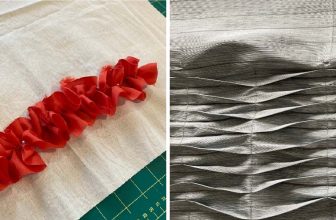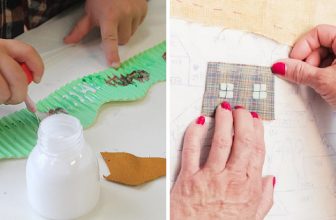How to Hem Stretchy Fabric
Do you dream of creating your own clothes but feel like it’s just out of reach? You don’t need to be a professional seamstress—all that’s required is knowing how to work with fabric. It might seem overwhelming at first, but once you learn the basics, like how to hem stretchy fabric, you will realize just how easy and enjoyable it can be.
Here we’ll cover everything from choosing the right needle and thread to working with special fabrics – so get ready for an exciting DIY journey!
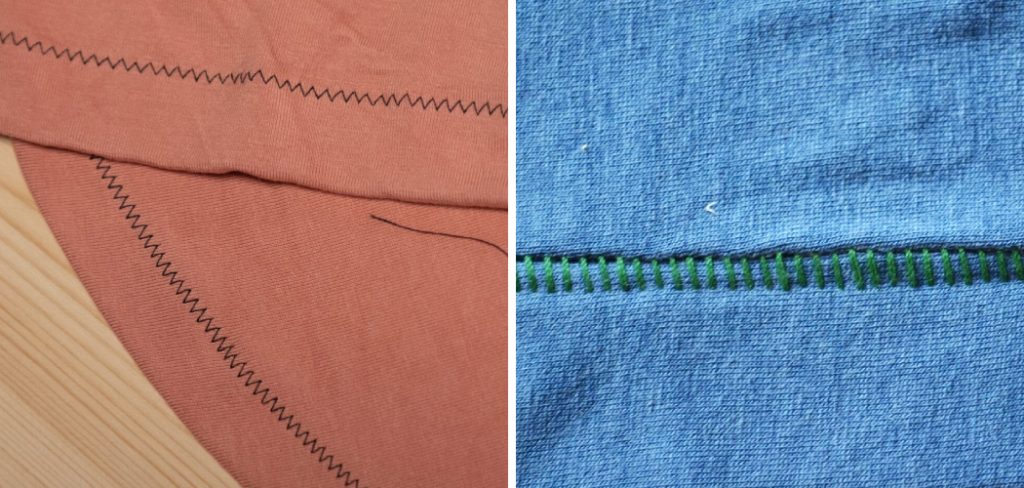
Hemming fabric can seem intimidating, but it’s actually a lot easier than you might think. We’re here to guide you through each step and make sure that your intricate projects turn out perfectly! No matter if the fabric is thin or thick, light or heavy – we have every sewing tool necessary for success. Read on as we teach you how to hem stretchy fabric.
Why May You Want to Hem Stretchy Fabric?
1 . To Give Your Garment a Finished, Professional Look
When you hem stretchy fabric, it gives the garment a polished, finished look. Hemmed garments often look cleaner and more tailored than those that are simply cut or left unfinished. Plus, having a properly hemmed garment can help to prevent fraying or other damage from occurring over time.
2 . For an Adjustable Length
If you choose to hem your stretchy fabric with elastic or another type of enclosed material, you can easily adjust the length depending on how tight or loose you make the enclosure. This is great for making sure your garment fits perfectly and looks professional, no matter what size you are.
3 . To Keep Your Fabrics in Place
Hemming stretchy fabric can also help to keep your fabrics in place. This is especially important for items like skirts or pants, where you want the fabric to stay close to the body and look neat. Sewing in a hem helps secure the edge of the fabric and prevents it from riding up or bunching as you move throughout your day.
How to Hem Stretchy Fabric in 5 Easy Steps
Step 1: Gather All The Tools
The very first step is to gather the supplies you will need. You will need a ruler or measuring tape, an iron, fabric scissors, pins, a marking pen, and a sewing machine. You may also want to invest in specialized elastic or other materials that are designed for use in creating hems.
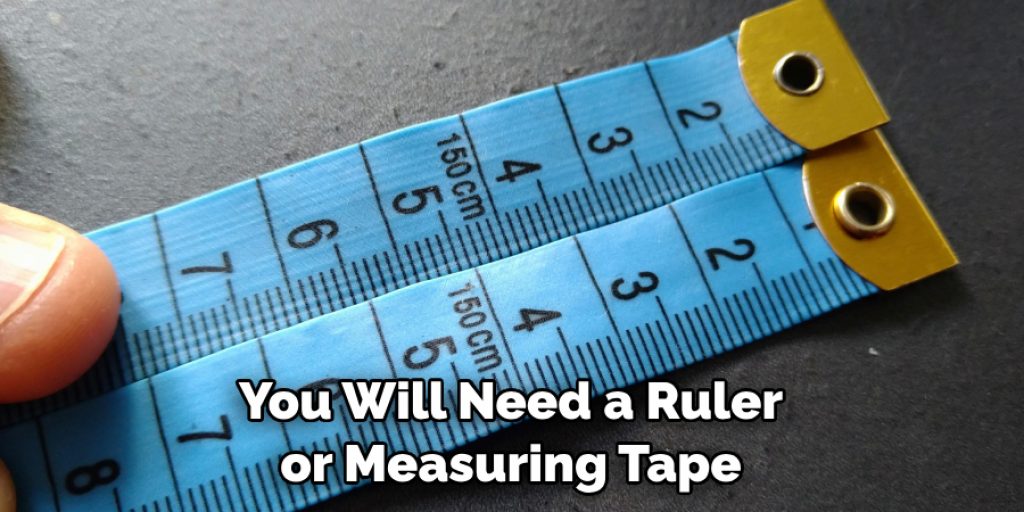
Step 2: Measure Your Fabric
Measure the width of the hem you want to create and mark it with a pen on the fabric. Make sure to double-check your measurements before continuing forward.
Step 3: Iron the Fabric
Use your iron to press and smooth out the fabric so that it’s easier to work with while sewing. This will also help keep the edges of your hem even as you sew. Also, remember to use the appropriate heat setting for your fabric type.
Step 4: Begin Sewing
Secure the edge of the fabric with pins and then begin sewing along your marked line. Use a straight stitch and make sure to back-stitch at the beginning and end of each line to keep your hem secure.
Step 5: Finish the Hem
Once you have finished sewing your hem, use scissors or a pinking shear to trim off any excess fabric. Then, press the hem once more with an iron and you’re done!
10 Tips for Hemming Stretchy Fabric
1 . Use Quality Fabrics
When creating a hem on stretchy fabrics, it’s important to use fabrics that are of good quality. Cheaper fabrics may not hold up as well and may come apart after only a few years.
2 . Select the Right Thread
Make sure to choose the right thread for your fabric type – thin threads for lightweight fabrics, and thicker threads for heavier fabrics. This will help keep your hem secure.
3 . Press Your Fabric Before Starting
Before you begin sewing, press your fabric with an iron to make sure it lays flat. This will give you a much cleaner finished product. Also make sure to use the correct heat setting for your fabric type.

4 . Choose an Appropriate Stitch Length
Choose a stitch length that is appropriate for the fabric – shorter stitches for heavier fabrics and longer stitches for lighter fabrics. This will help keep your seams secure without causing unnecessary tension on the fabric itself.
5 . Work with Small Segments
When hemming stretchy fabric, it’s best to work in small segments. Sewing over too much fabric at once can cause the material to bunch up or become distorted. Also, make sure to back-stitch at the beginning and end of each line.
6 . Pin Your Fabric First
It’s a good idea to use pins when hemming stretchy fabric in order to keep everything in place. This will help prevent your fabrics from shifting while you sew.
7 . Use Elastic or Other Materials for an Adjustable Hem
If you want to create a hem that is adjustable, try using elastics or other materials designed for this purpose. This will allow you to adjust the length of your garment without having to re-sew it.
8 . Trim Excess Fabric and Threads
Once you have finished sewing your hem, use scissors or pinking shears to trim off any excess fabric or threads. This will give your garment a neat, finished look.
9 . Give Yourself Plenty of Time
Hemming stretchy fabrics can be a tricky process and it’s important to take your time with it. Be sure to set aside plenty of time so that you won’t be rushed or feel overwhelmed.
10 . Have Fun and Experiment!
Finally, have fun with hemming stretchy fabric! Try out different techniques and materials to find what works best for your projects. Experimenting can be a great way to make sure you end up with the perfect look that you envisioned.

Frequently Asked Questions
What Precautions Should I Take When Hemming Stretchy Fabric?
Taking precautions when hemming stretchy fabric is incredibly important. Make sure to use a fabric-specific needle size and type, as well as the proper thread weight for the job. It’s best to start with a single line of stitching and then double back or lockstitch at the end for added strength.
If your fabric is especially thick or stretchy, you may need to use a wider seam allowance and reinforce the hem with interfacing. Additionally, it’s important to make sure your fabric is pre-washed before hemming as shrinkage can throw off the fit of your finished garment.
How Do I Know When My Hemmed Stretchy Fabric Is Finished?
Once you’ve finished hemming your stretchy fabric, use a ruler to check that the hem is even and the stitching is consistent. If it’s not quite even, you can make adjustments by folding or pinning more fabric in certain areas. Additionally, once your stretch hem is complete, give it a light ironing with steam to help set its shape and keep it looking neat. Finally, try the garment on and check that it fits correctly before wearing or giving as a gift!
What Are Some Creative Ideas for Working with Stretchy Fabric?
Stretchy fabric is incredibly versatile and can be used in a variety of creative sewing projects. From stretchy tops to skirts, dresses, shorts, and even pants, there’s no limit to what you can make with a few simple pieces of fabric.
Additionally, stretchy fabrics are great for upcycling and refashioning old clothes into something new. With a bit of creativity and some basic sewing skills, you can easily customize your wardrobe with unique items crafted from stretch fabric!
What Are the Best Tools For Working With Stretchy Fabric?
When working with stretchy fabric, it’s important to use the right tools for the job. Investing in a good quality sewing machine can make all the difference when it comes to creating durable and long-lasting garments.
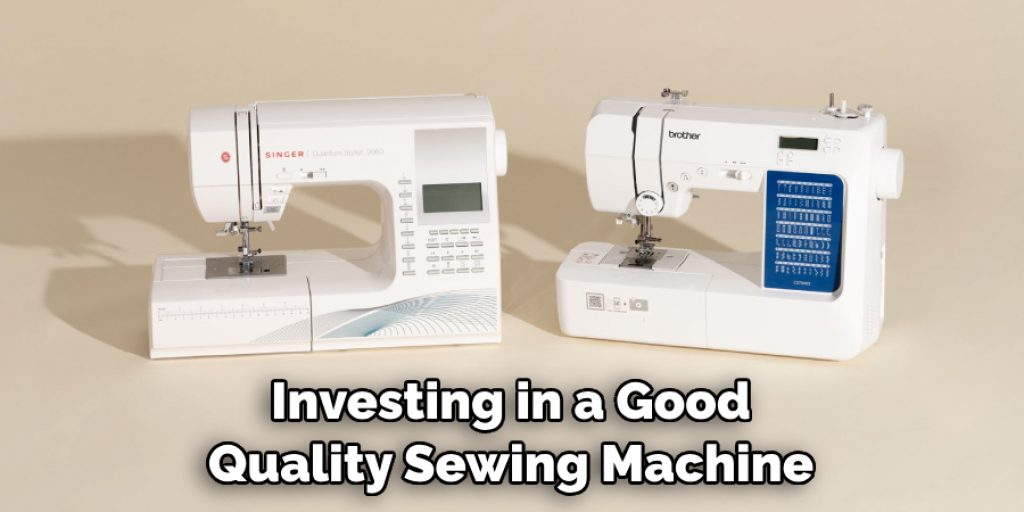
Additionally, special needles specially designed for knit fabrics are essential when hemming stretchy fabrics as they have larger eyes that won’t damage or break the threads. Finally, you’ll also want to make sure you have some quality fabric shears on hand for cutting and trimming your stretchy fabric pieces.
Conclusion
To wrap up, hemming stretchy fabric can be a tricky task, but with the right tools for the job and some trial and error, anyone can master this essential skill. So get out there and get your hands dirty! Learning how to hem stretchy fabric, it can open up so many possibilities for you in your sewing journey.
Now you know how to hem stretchy fabric! From chiffon to spandex, you’ll be able to incorporate these fabrics into your wardrobe without worrying about long and frayed hemlines. Start experimenting today – what kind of garment can you make with stretchy fabrics? Your creativity is the only limit here! So go grab your sewing materials and unleash your inner designer – happy hemming!

